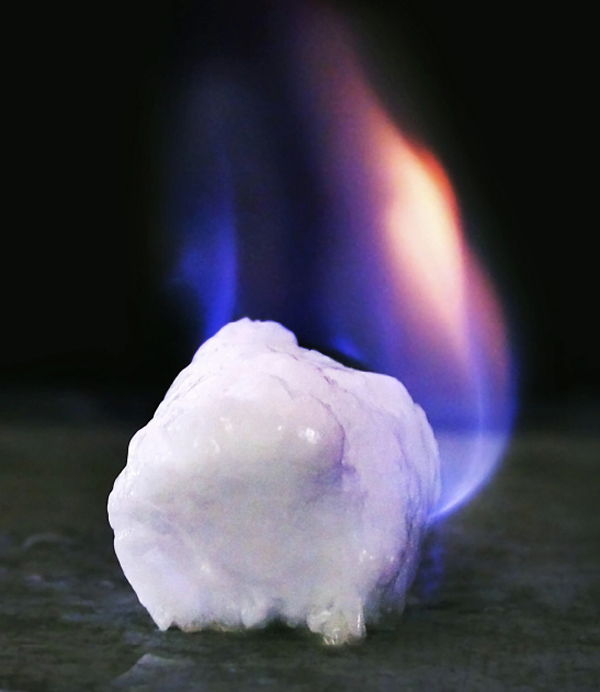1965
Methane Hydrate
Humphry Davy (1778–1829), Yuri F. Makogon (b. 1930)
Methane hydrate is a substance that makes you realize how odd the natural world is. Methane (CH4, the simplest of all the hydrocarbons) is a gas at room temperature and pressure. It’s not particularly soluble in water—at room temperature, you can get about twenty milligrams of it into one kilo of water, only one part in fifty thousand by weight. But put water and methane together under cold, high-pressure conditions and the water will freeze so that it “cages” methane molecules, a form known as a clathrate (from the Latin word clathratus, meaning “furnished with a lattice”). This methane hydrate looks like cloudy ice, but it has about 13 percent methane in it by weight, which is enough for it to catch fire. The sight of a dripping ice cube with blue and orange flames coming from it is a bit difficult to process.
English chemist Humphry Davy first discovered this strange stuff in 1810, and in the 1940s it turned up clogging natural gas pipelines, where it was considered a major pain for the engineers (it still is). No one thought it could be a naturally occurring substance—not on this planet, anyway—until 1965, when it was reported in the sediments under a Siberian natural gas field by Ukrainian engineer Yuri F. Makogon. After that, vast amounts were found under the oceans, at the bottom of the comparatively shallow waters of the continental shelves. The amount of methane contained in these layers is hard to estimate but it is probably many times the amount known to exist in traditional deposits. Naturally enough, this has attracted attention in a world always looking for new sources of energy, and Japan is the first country that appears to be starting serious mining of its methane hydrate fields.
Careful study of the isotopes found in these deposits has indicated that the most abundant ones are formed from gas produced over the years by bacteria. Some other deposits, though, have a different isotopic signature, suggesting that their gas seeped up from deeper in the earth without a biochemical origin at all.
SEE ALSO Ideal Gas Law (1834), Isotopes (1913), Isotopic Distribution (2006)

A lump of flaming methane hydrate, a common substance in the Arctic and the ocean floor.